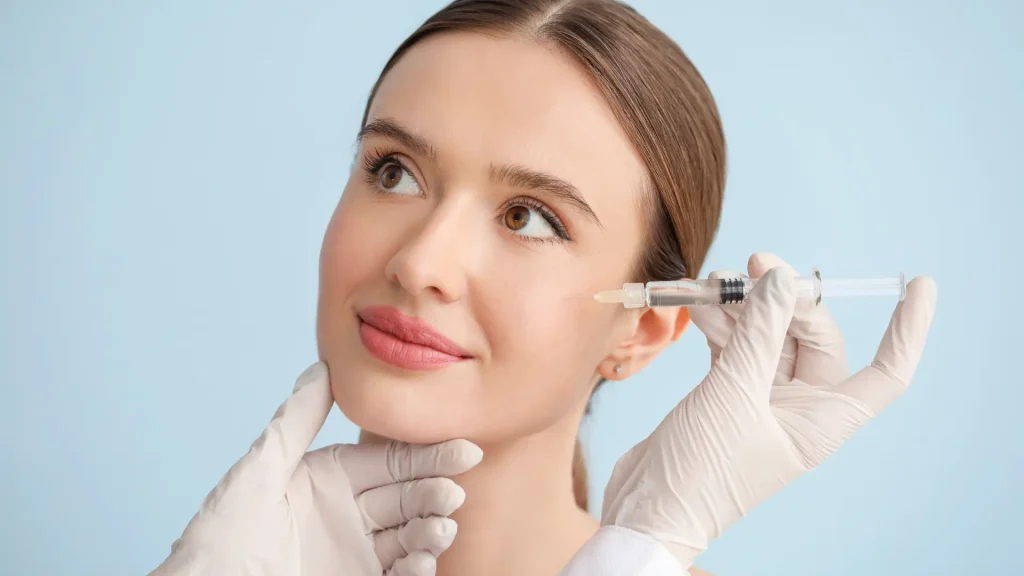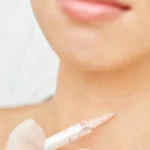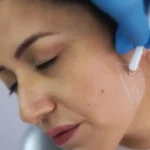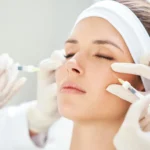
According to UNICEF, there has been a commendable global upsurge in exclusive breastfeeding practices, with rates escalating by ten percentage points over the past decade. This statistic concluded that the worldwide breastfeeding rate is now at 48%.
With the increasing number of breastfeeding individuals globally, they may also seek aesthetic solutions for their facial concerns. Poly-L-lactic acid dermal fillers like Sculptra can help address volume loss and facial signs of aging. With the help of aesthetic professionals, Sculptra injections can deliver optimal outcomes to their patients.
This article will address the safety of using Sculptra in breastfeeding patients, potential risks and benefits, and alternative treatment options.
Key Takeaways
- Unlike hyaluronic acid and other dermal fillers, Sculptra works gradually, offering subtle results that last over two years.
- Unfortunately, no specific clinical studies were found regarding Sculptra use during breastfeeding or on lactating women.
- General dermal filler guidelines advise caution due to insufficient evidence supporting Sculptra for breastfeeding treatment.
- Without sufficient evidence, the primary risk of Sculptra to breastfeeding patients remains unknown in the aesthetic field.
- Adhering to the patient selection criteria, thorough consultation, and proper administration of Scultra can maximize the benefits of the injectable treatment, such as facial rejuvenation and lasting results.
About: Medica Depot is your trusted all-in-one supplier, offering a range of high-quality medical injectables and supplies. Buy Sculptra wholesale at Medica Depot today! Whether for health professionals, plastic surgeons, dermatologists, licensed estheticians, or other specialists, we can offer genuine, brand-name products you may need. With Medica Depot, we prioritize serving you better to improve the patient’s quality of life.
Understanding Sculptra and Its Use in Aesthetic Procedures

Sculptra sets itself apart from traditional dermal fillers due to its unique mechanism of action. The injectable contains poly-L-lactic acid (PLLA), which targets the skin’s deep layers and stimulates collagen production to restore the skin’s inner structure and quality.
Sculptra ingredients include the active component, poly-L-lactic acid, which constructs a framework within the skin that sustains and fortifies its underlying structure, potentially culminating in an enhanced, rejuvenated aesthetic. Moreover, the US Food and Drug Administration has approved the injection for specific uses:
- Sculptra for Nasolabial Folds and Contour Deficiencies
- Fine Lines and Wrinkles in the Cheek Region and Other Facial Wrinkles
- Facial Fat Loss
Unlike Sculptra vs Juvederm or other dermal fillers, Sculptra works gradually, offering subtle results that last over two years. Patients may notice the results after a month of treatment and continue to improve for optimal outcomes until the end of the treatment plan and procedure.
Clinical Data and Expert Guidelines on Dermal Fillers During Lactation
Unfortunately, no specific clinical studies were found regarding Sculptra use during breastfeeding or on lactating women. Additionally, no Sculptra before and after photos or testimonials of breastfeeding patients are available online. Sculptra’s Important Safety Information has shown that safety for the following patients has yet to be established:
- Pregnant Patients
- Lactating Patients
- Breastfeeding Patients
- Patients under 18 years of age
Furthermore, detailed guidelines for Sculptra injections during lactation and breastfeeding are not provided. These individuals must seek medical and aesthetic professionals’ guidance and expertise to determine if they can receive the treatment. However, it’s worth noting that Sculptra injections only indicate adult individuals with healthy immune systems who need to undergo the treatment.
General dermal filler guidelines advise caution due to insufficient evidence supporting Sculptra for breastfeeding treatment. Moreover, medical and aesthetic experts recommend postponing aesthetic procedures until after breastfeeding to avoid any potential Sculptra side effects or complications.
Potential risks for Sculptra and breastfeeding individuals remain unknown, but the common side effects of the injectable may still occur if the procedure continues. Sculptra patients may expect these side effects to resolve within a few days or weeks. If these persist, seek immediate medical attention for proper management.
- Injection Site Pain
- Redness
- Bruising
- Tenderness
- Itching
- Lumps
- Bleeding
- Swelling
Balancing Risks and Benefits for Breastfeeding Patients

Without sufficient evidence, the primary risk of Sculptra to breastfeeding patients remains unknown in the aesthetic field. The lack of research in this area may lead medical and aesthetic practitioners to suggest delaying the treatment to ensure the patient’s and infant’s safety. The impact of Sculptra on breast milk remains unclear, necessitating caution.
Patients should understand that Sculptra can deliver various benefits when providers consider the appropriate indication of the injectable. Adhering to the patient selection criteria, thorough consultation, and proper administration of Scultra can lead to maximizing the benefits of the injectable treatment.
- Long-Lasting Treatment Outcomes
- Restores Facial Volume Loss
- Enhances and Smooths the Fine Lines and Wrinkles Appearance
- Minimal Downtime and Quick Procedure
However, patients must weigh these benefits against the potential unknown risks during breastfeeding. A thorough consultation and discussion with a trusted and licensed aesthetic professional can equip patients with comprehensive information, significantly helping them make informed treatment decisions.
Practical Advice for Patient Counseling and Alternative Treatment Options


For breastfeeding individuals considering Sculptra injections, medical professionals must explain the lack of safety data for Sculptra during lactation. They may recommend postponing treatment until after breastfeeding to ensure that the patient avoids complications and risks associated with the treatment.
Aesthetic professionals may suggest these individuals for alternative options to restore their younger looks and for facial rejuvenation. Individuals may avoid injectables or any treatment that can potentially affect the patient’s breast milk. Other solutions may include:
- Topical Creams
- Mechanical Skin Treatments (Microneedling, Chemical Peels, Hydrodermabrasion, etc.)
On the other hand, individuals who have used Sculptra injections during breastfeeding should strictly monitor for any adverse reactions post-treatment. Aesthetic practitioners must address these concerns promptly for the appropriate management and to prevent further risks.
Conclusion
Due to insufficient safety data, Sculptra, a prominent aesthetic treatment, remains a subject of caution for breastfeeding patients. While it offers potential benefits in facial rejuvenation, the absence of conclusive research necessitates a considerate approach, prioritizing the well-being of both mother and child.
Healthcare providers should counsel patients on the unknowns surrounding Sculptra during lactation and discuss alternative, non-invasive options. Furthermore, the decision should be based on a thorough risk-benefit analysis and a commitment to post-treatment attentiveness.
FAQs
1. Is Sculptra safe for breastfeeding individuals?
Currently, there is no specific clinical research available regarding the safety of Sculptra injections for individuals who are breastfeeding. Medical guidelines advise caution due to the absence of evidence of its safety during lactation. It is recommended that patients consult with healthcare professionals to make an informed decision.
2. What makes Sculptra different from other dermal fillers?
Sculptra is unique because it contains poly-L-lactic acid (PLLA), which stimulates collagen production in the skin’s deep layers. This provides gradual and subtle results lasting over two years. Unlike immediate-effect fillers, Sculptra targets the skin’s underlying structure for longer-lasting rejuvenation.
3. Can breastfeeding individuals experience side effects from Sculptra?
While the specific risks of Sculptra for breastfeeding individuals are not known due to the lack of research, typical side effects include injection site pain, redness, bruising, tenderness, itching, lumps, bleeding, and swelling. These are usually temporary, but consultation with a medical professional is advised for any concerns.
References
- Global breastfeeding scorecard 2023 | UNICEF. (2023). Www.unicef.org. https://www.unicef.org/documents/global-breastfeeding-scorecard-2023
- Sculptra ® Galderma. (n.d.). In www.sculptrausa.com. Retrieved June 18, 2024, from https://www.sculptrausa.com/docs/Sculptra-e-IFU
Clinical aesthetics products refer to a category of products used in the field of medical aesthetics or cosmetic dermatology. These products are typically designed and formulated to be used under the supervision of healthcare professionals, such as dermatologists, plastic surgeons, or trained aestheticians. They are distinct from over-the-counter cosmetics in that they often contain active ingredients or formulations that require expertise in their application or administration.
Examples of clinical aesthetics products include:
-
Dermal Fillers: Injectable substances used to add volume, smooth wrinkles, and enhance facial contours. Examples include hyaluronic acid fillers like Juvederm and Restylane.
-
Botulinum Toxin (Botox): Injectables that temporarily paralyze facial muscles to reduce the appearance of wrinkles caused by repetitive movements, such as frown lines and crow's feet.
-
Chemical Peels: Solutions applied to the skin to exfoliate and improve its texture. They can treat acne, pigmentation issues, and signs of aging.
-
Laser and Light Therapies: Devices that emit focused light or laser energy to treat various skin conditions, including acne, scars, and signs of aging.
-
Prescription Skincare Products: Formulations containing active ingredients like retinoids (vitamin A derivatives), hydroquinone, or prescription-strength antioxidants to address specific skin concerns under medical supervision.






